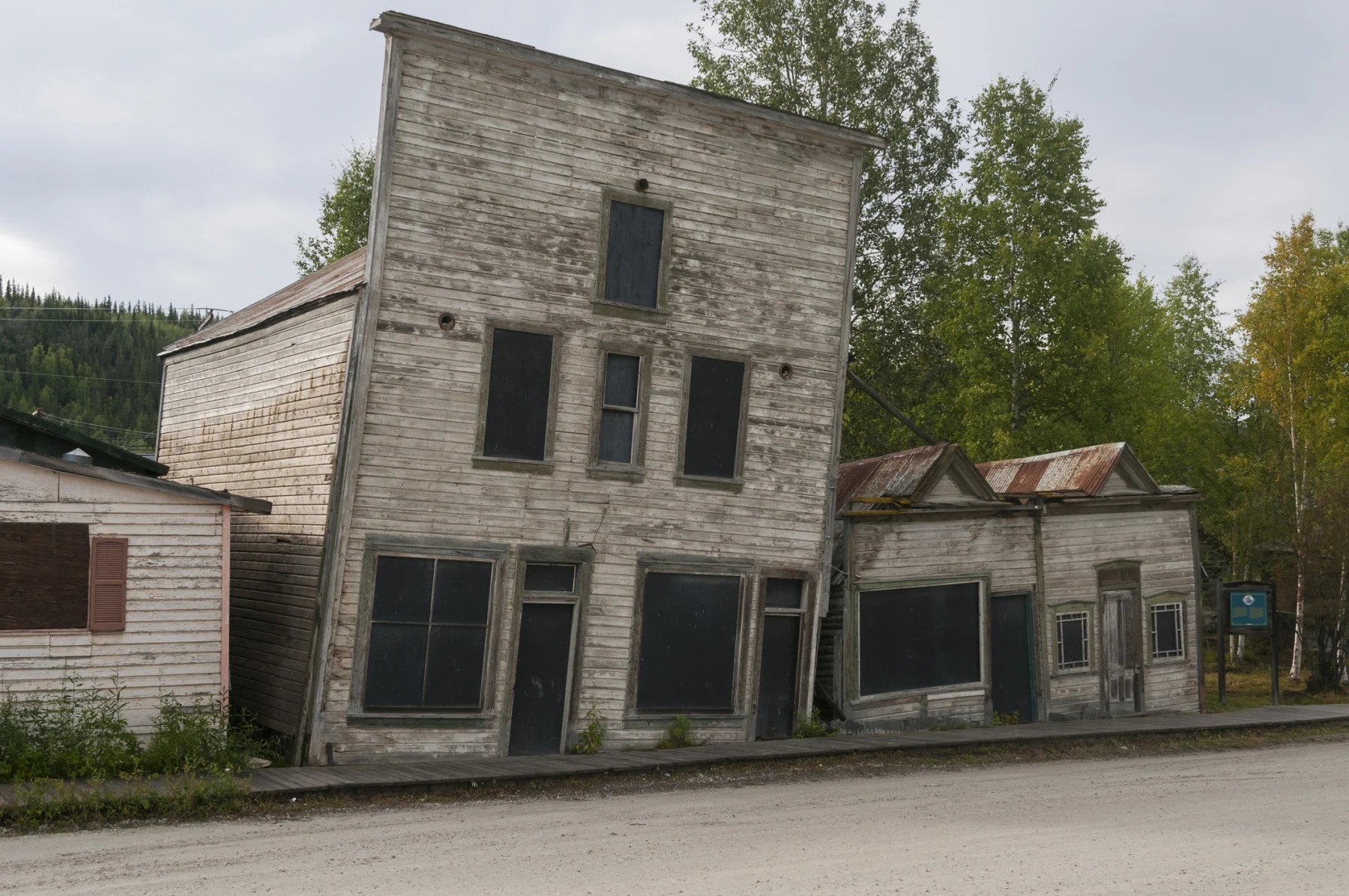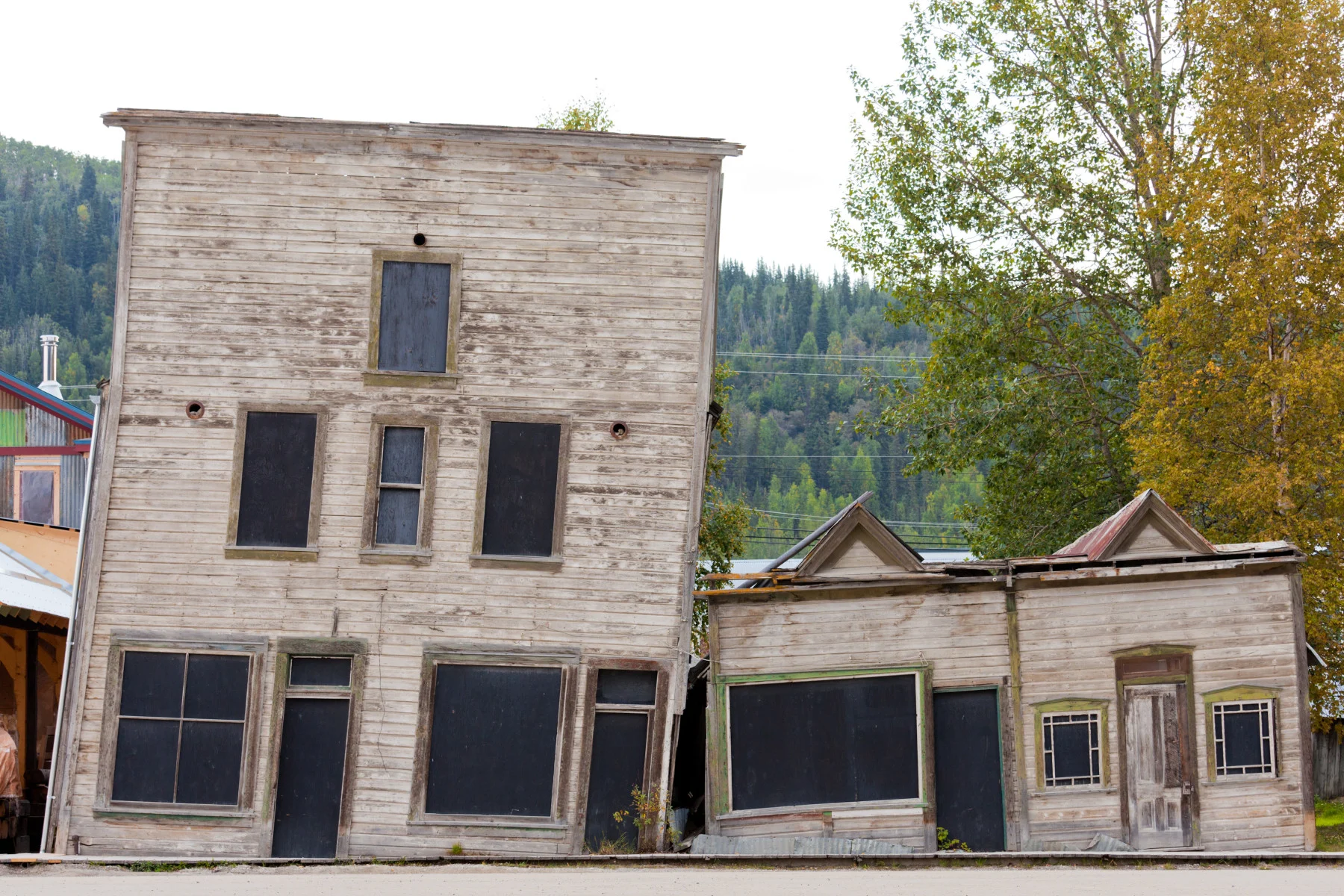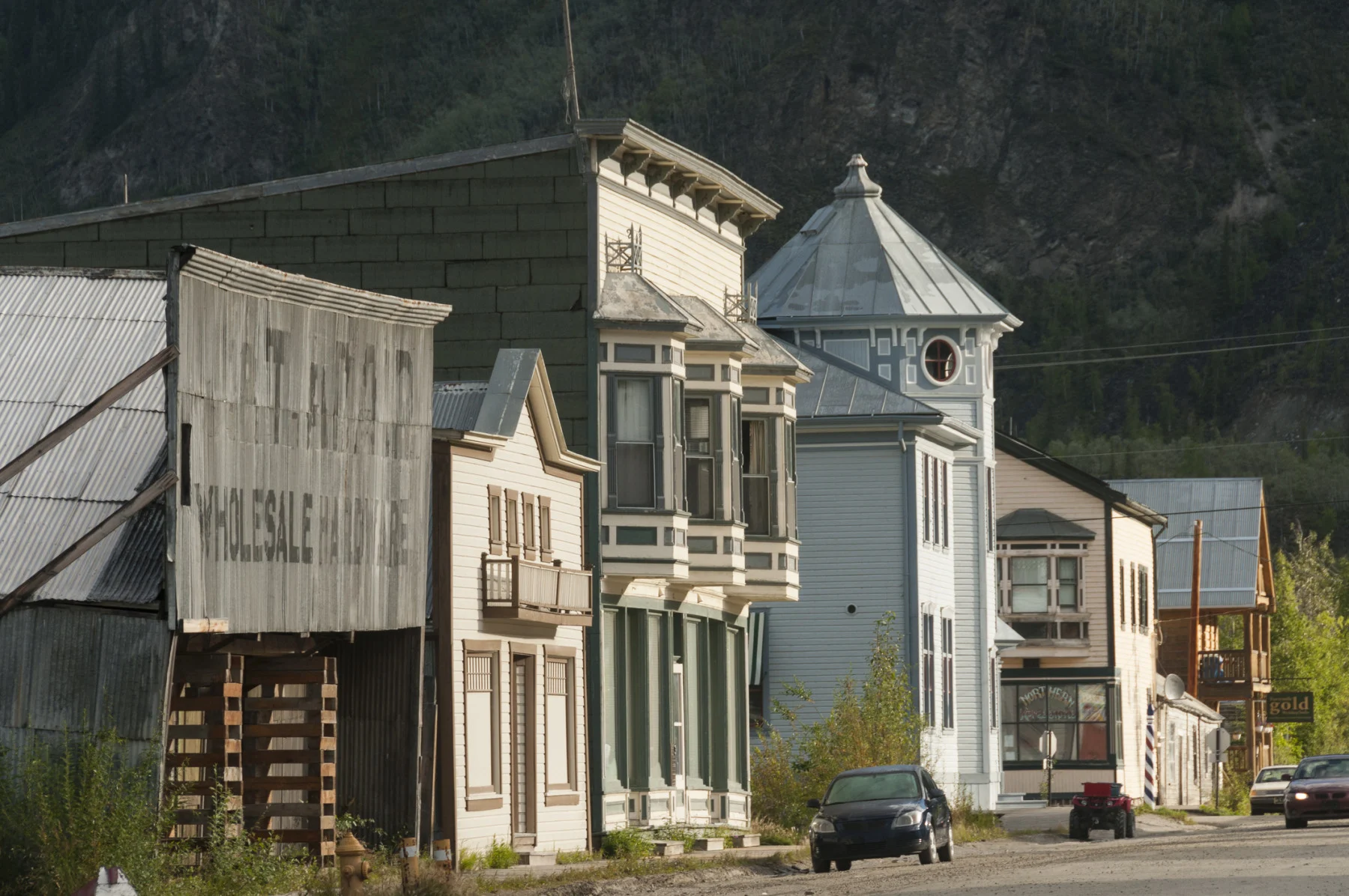
Canada's historic Gold Rush buildings are caving in as permafrost thaws
As permafrost thaws below the surface of Dawson City, it has been a race against time to save buildings that date back to the Klondike Gold Rush.
When gold was discovered in Dawson City, Yukon back in the 1900’s, the town exploded. Around 40,000 people moved to the region and built homes. The town was built quickly, but not for permanent use.
Fast forward to 2021 and now several of the buildings are caving in because the permafrost underground is thawing.

Goldrush heritage buildings in Dawson City, Yukon with foundations on melting permafrost making them slant. (Pi-Lens/ iStock/ Getty Images Plus)
Permafrost is found in places where the air is cold enough year round that the earth never fully thaws. More specifically, scientists note permafrost is any ground that remains completely frozen for a minimum of two years. But as ground temperatures rise, ice lenses, the bodies of ice formed by moisture accumulation in soil and rock, melt away and disappear. This means that the ground loses volume and structure and consequently the stability of the earth changes.
In Dawson City, there has been an increase in temperatures of over 2.4°C since 1901 and so the permafrost is shifting—similar increases are expected over the next two decades.

Historic downtown buildings in Dawson City. (John Elk III/ The Image Bank/ Getty Images)
Back in the 1970’s, Parks Canada stepped in and purchased over 75 different historic sites in the Klondike region. In some of the structures only interior beams were added to keep people safe, yet for those buildings reminiscent of earlier days greater intervention was needed for history’s sake.
“The easiest way to deal with the foundation is to excavate bedrock. The permafrost thaws and then is backfilled with gravel and that becomes your permanent foundation. Then the buildings are built up on wooden cribbing. The idea is you are building up off the ground, which allows the ground to stay frozen, cold air to circulate underneath, and if there is any shift or movement in the ground you can level the building with jacks,” Janice Cliff with Parks Canada told the Weather Network.
“So every 5 or 6 years you will find yourself doing a bit of leveraging,” Cliff said.
Now all new builds are following suit and building up off the ground, so their longevity will certainly be a test of time.
Watch the video above to learn more about how permafrost is impacting Dawson City.
Thumbnail credit: John Elk III/ The Image Bank/ Getty Images

